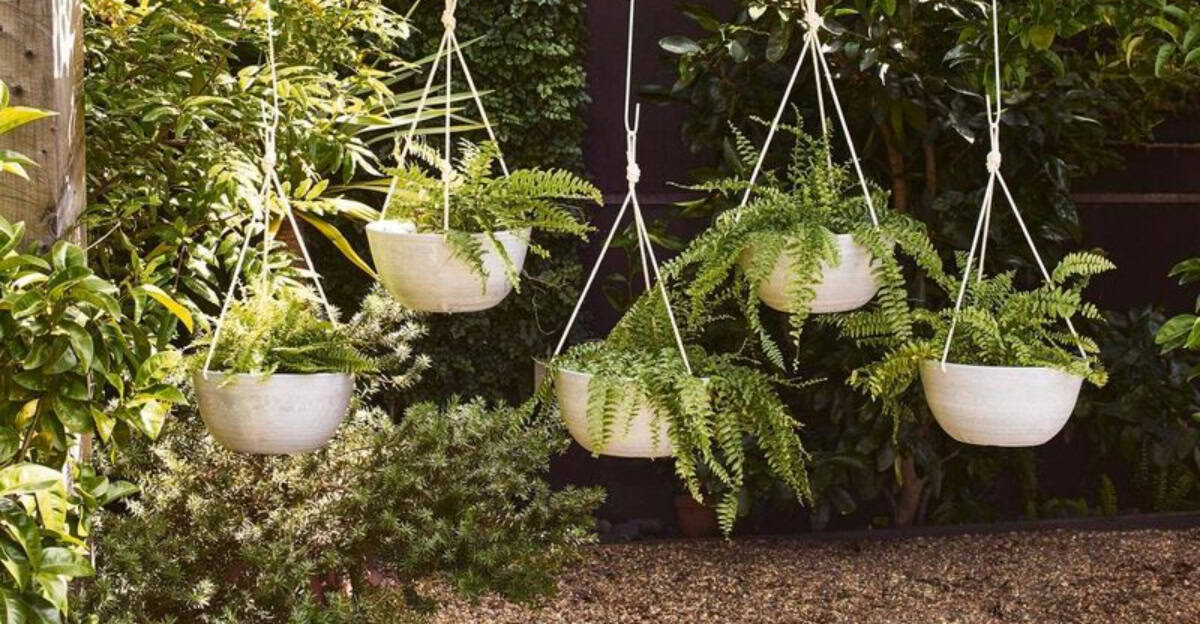Growing herbs in hanging baskets is a delightful way to add greenery and fresh flavors to your living space, even if you’re limited on garden real estate.
These suspended gardens can transform any balcony or sunny corner into an aromatic sanctuary.
Whether you’re a seasoned gardener or just starting your horticultural journey, these 10 herbs promise to invigorate your culinary creations while thriving in a hanging basket.
Dive into the world of hanging herb baskets, where practicality meets beauty, and discover how these specific plants not only save space but also enhance your culinary adventures with their vibrant tastes and rich aromas.
1. Basil
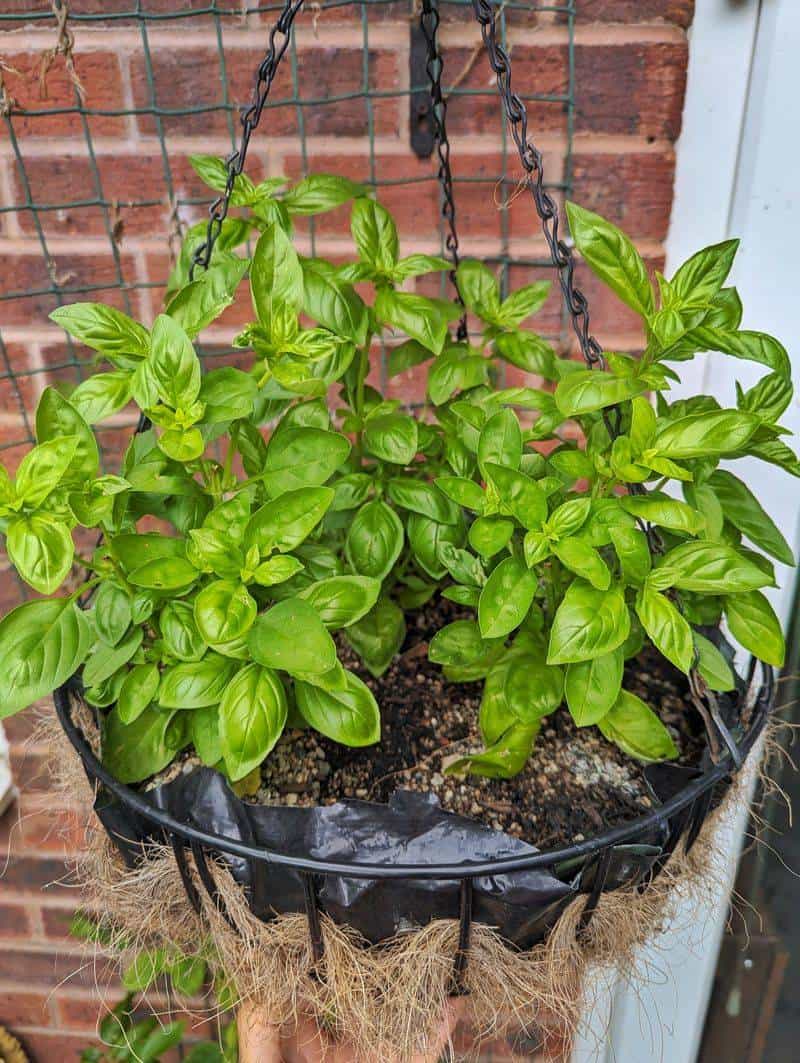
Basil, with its intoxicating aroma, is a favorite among chefs and home cooks alike. Its vibrant green leaves add a burst of flavor to any dish.
Imagine this herb cascading from a hanging basket, releasing its sweet scent as you brush past.
Basil thrives in warm conditions and requires plenty of sunlight, making it perfect for an airy kitchen window or a sunny balcony. Just a few fresh leaves can transform a simple meal into a culinary masterpiece.
Ensure regular watering and occasional trimming to keep your basil flourishing and ready for your next recipe.
2. Thyme
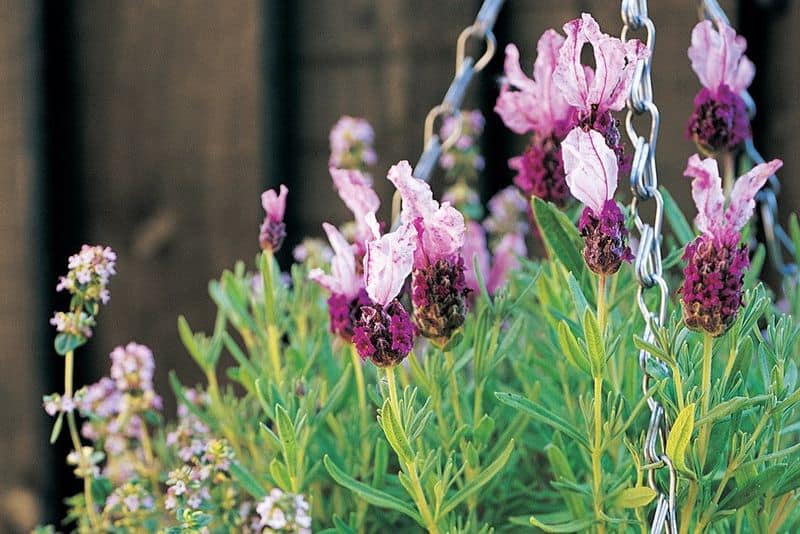
Thyme is a resilient herb that exudes a subtle, earthy aroma, perfect for enhancing soups and stews. Its small, woody stems make it ideal for hanging baskets, where it can drape elegantly.
This hardy plant requires minimal care – just a sunny spot and well-drained soil.
Thyme’s creeping nature allows it to fill spaces beautifully, creating a lush green cascade.
With its soothing scent and versatile culinary uses, thyme is an indispensable addition to any herb garden, particularly in compact spaces like hanging baskets. Periodic pruning encourages healthy growth and form.
3. Mint
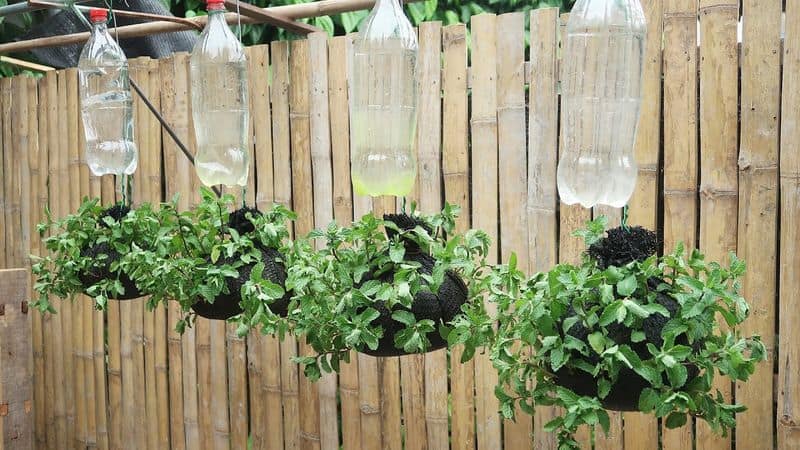
Mint is a refreshing herb that brings a cool, tangy flavor to both sweet and savory dishes. It’s a vigorous grower, making it an excellent choice for hanging baskets where space is a premium.
The cascading growth of mint adds a touch of wild charm to any setting.
Place your mint basket in partial shade for lush leaves and intense flavor. Regular pruning prevents it from becoming leggy and encourages bushier growth.
Whether for a mojito or a mint sauce, this herb is always ready to add a zesty punch to your recipes.
4. Oregano
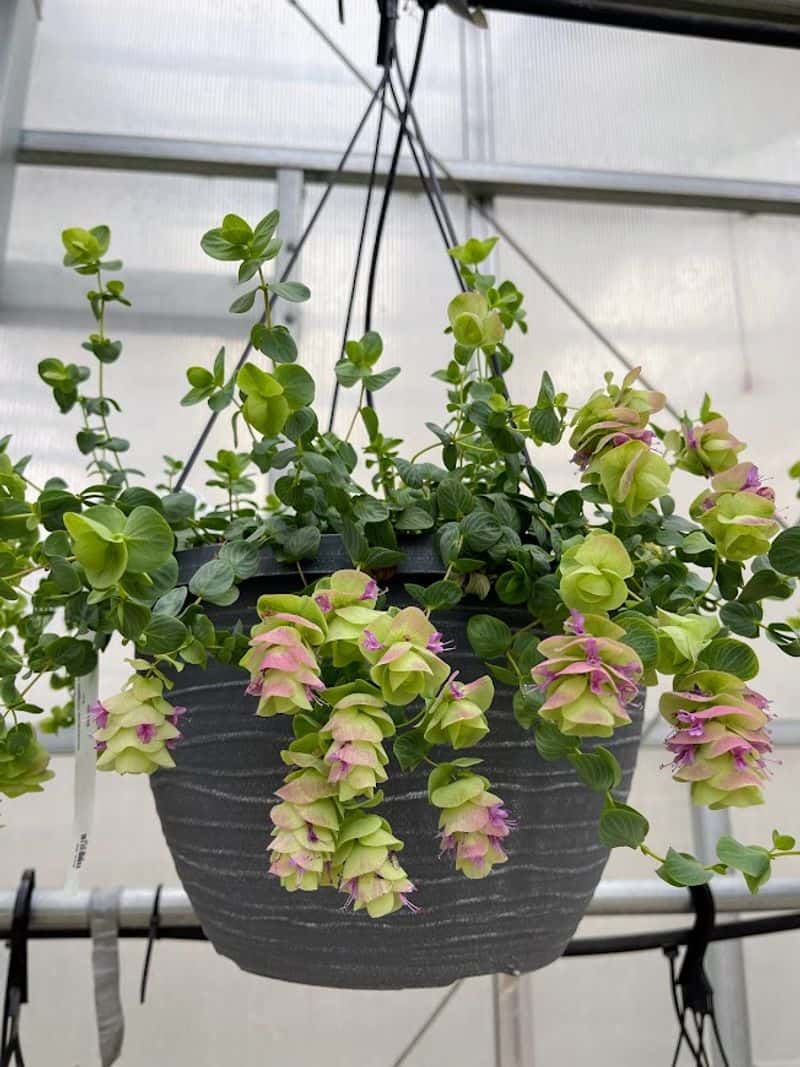
Oregano, known for its robust taste, is a staple in Mediterranean cuisine. Its sprawling nature makes it suitable for hanging baskets, where its leaves can spill over the sides attractively.
Oregano loves sunlight and well-drained soil, thriving with minimal fuss.
This perennial herb not only enhances dishes with its bold flavor but also with its charming appearance in any garden space.
Regular harvesting of the leaves ensures continuous growth and a steady supply of this flavorful herb. From pizzas to pastas, oregano adds a delightful depth to your culinary creations.
5. Parsley

Parsley is a versatile herb, often underestimated in its culinary power. Both curly and flat-leaf varieties thrive in hanging baskets, providing fresh garnish and flavor year-round.
Its vibrant green leaves capture sunlight beautifully, making it an attractive addition to any setting.
Parsley needs regular watering and partial shade to maintain its lushness. This herb not only brightens dishes but also adds a layer of freshness.
Harvesting is simple; just snip what you need and watch it continue to flourish. Incorporating parsley into your garden is a flavorful decision you won’t regret.
6. Cilantro

Cilantro, with its distinctive flavor, is a beloved herb in many global cuisines. Its delicate leaves and occasional white flowers make it a visually appealing choice for hanging baskets.
Cilantro thrives in cooler weather and requires consistent moisture to maintain its lush appearance.
A hanging basket allows for proper drainage, essential for this herb’s health. Regular harvesting promotes new growth, ensuring a continuous supply for your dishes.
Whether you’re crafting salsas or curries, cilantro’s unique taste will elevate your culinary adventures. Its aromatic presence is as delightful as its culinary versatility.
7. Sage
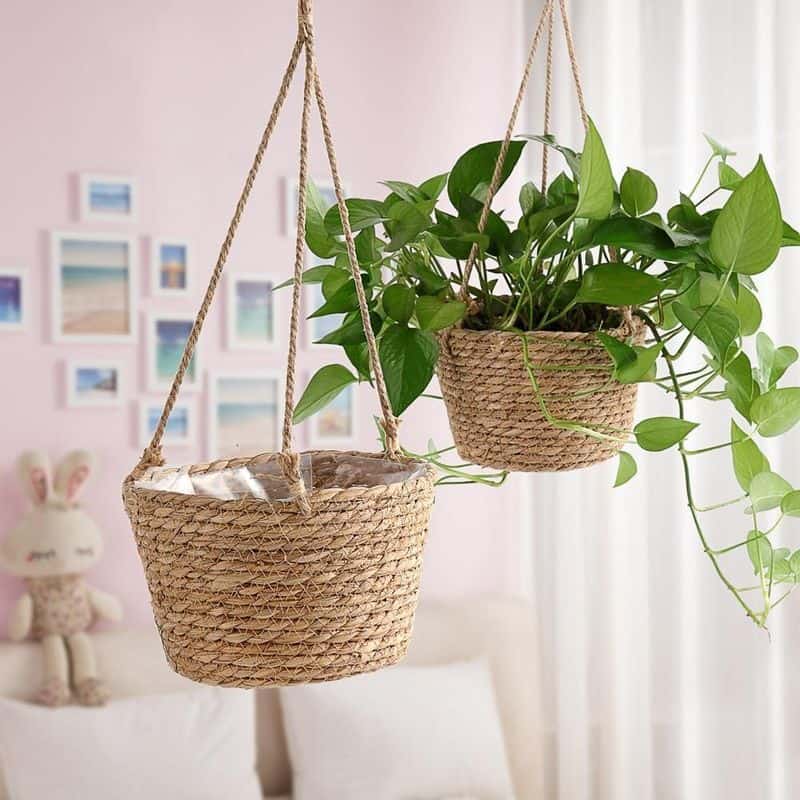
Sage, with its robust leaves and earthy aroma, brings a sense of warmth and comfort to any dish. Its striking grey-green leaves add a touch of elegance to hanging baskets.
Sage prefers full sun and requires regular watering to thrive.
The plant’s bushy nature makes it an excellent choice for creating a full, lush appearance. Sage pairs beautifully with meats and root vegetables, infusing them with a rich, savory depth.
Keep your sage healthy by pruning regularly, encouraging new growth. Its presence in your garden will be both practical and visually pleasing.
8. Rosemary
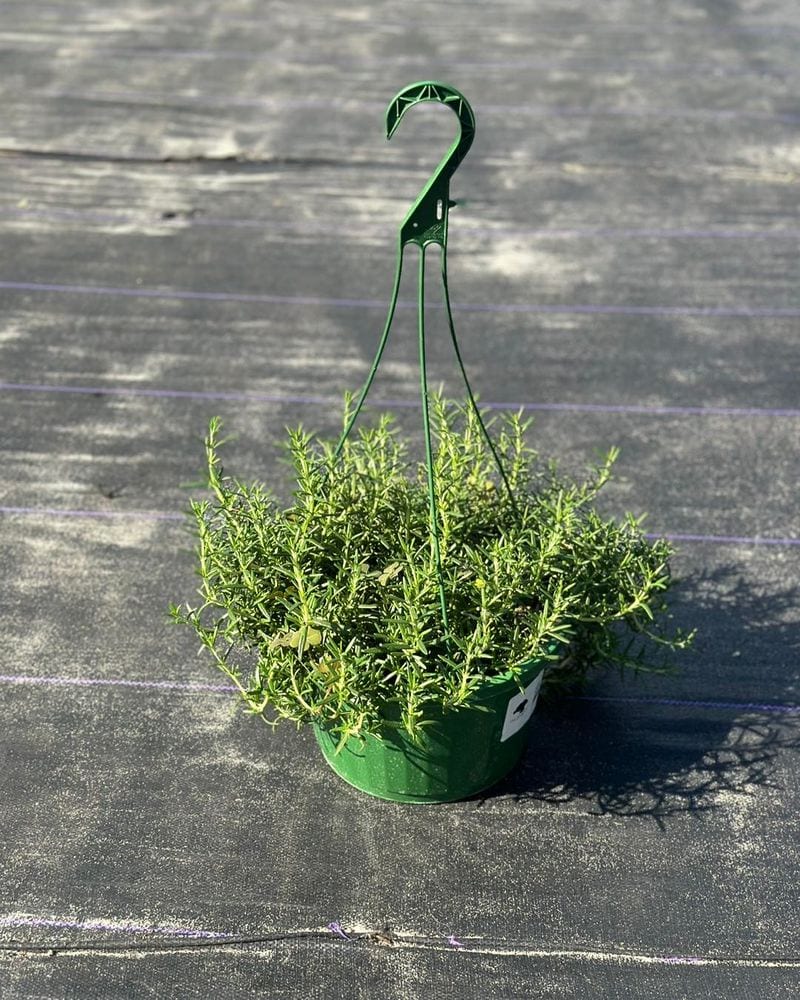
Rosemary is a classic herb that brings a pine-like fragrance to your garden. Its woody stems and needle-like leaves make it a standout in hanging baskets.
Preferring full sun, rosemary is drought-tolerant once established, making it low-maintenance.
Its cascading habit adds a touch of wilderness to your space. Rosemary is perfect for flavoring meats, potatoes, and breads, offering a taste of the Mediterranean.
Regular pruning keeps the plant tidy and encourages dense growth. This herb will thrive in your hanging baskets, offering both beauty and flavor throughout the year.
9. Chives

Chives are a delightful herb that offers a mild onion flavor, perfect for garnishing. Their slender green stems and purple blossoms make them a charming addition to hanging baskets.
Chives require minimal care, thriving in both sunny spots and partial shade.
Their compact growth ensures they fit well in smaller spaces. Regular trimming encourages a continuous supply of fresh chives.
This versatile herb can be used in salads, soups, and more, always adding a subtle taste enhancement. Incorporate chives into your garden for a splash of color and a consistent flavor boost.
10. Lemon Balm
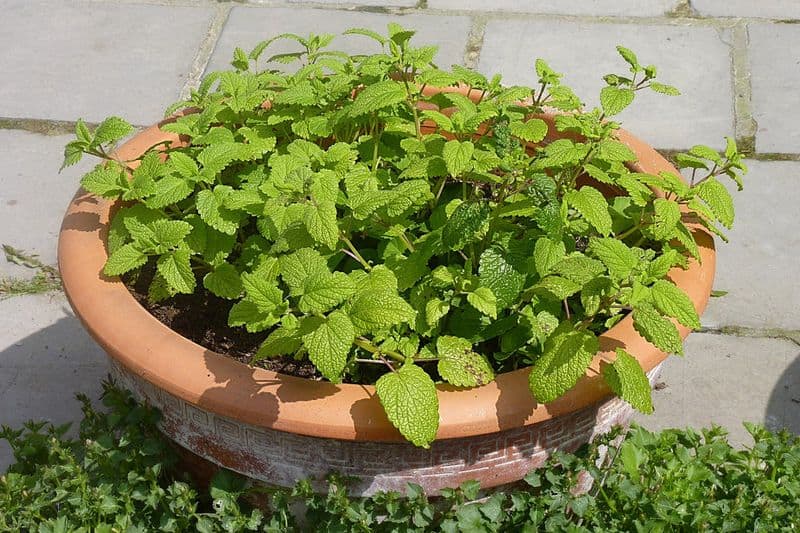
Lemon balm, known for its calming properties, is a fragrant herb with a hint of citrus. Its bright green leaves and bushy growth make it perfect for hanging baskets.
This herb enjoys a sunny spot and moderate watering, thriving with minimal fuss.
Lemon balm’s scent is soothing, and its leaves can be used in teas, desserts, and even as a garnish. Regular pruning encourages bushier growth and prevents legginess.
Whether you’re sipping a calming tea or enjoying a dessert, lemon balm adds a refreshing twist to your culinary creations. Its lush foliage is a visual delight.

